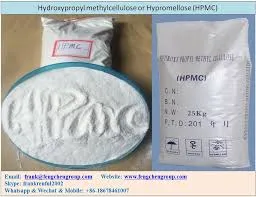
Nov . 06, 2024 16:38 Back to list
Understanding Hydroxyethyl Cellulose and Its Applications in Various Industries
What is Hydroxyethyl Cellulose?
Hydroxyethyl cellulose (HEC) is a water-soluble polymer derived from cellulose, a natural polymer that forms the structural component of plant cell walls. This versatile compound is widely used across a variety of industries, including pharmaceuticals, cosmetics, food, and construction, due to its unique properties and functionality. In this article, we will explore what hydroxyethyl cellulose is, its properties, applications, production methods, and safety.
Properties of Hydroxyethyl Cellulose
HEC is a non-ionic, hydrophilic compound that is characterized by its exceptional ability to form viscous solutions when dissolved in water. This viscosity can vary depending on the concentration of HEC in the solution and the molecular weight of the polymer. One of the most significant properties of HEC is its thickening ability, which allows it to enhance the texture and stability of formulations. HEC is also resistant to high temperatures and pH variations, making it suitable for a variety of applications.
Additionally, HEC is biodegradable and derived from renewable resources, which makes it an environmentally friendly option. It is often favored in formulations where a natural ingredient is desirable. Due to its non-toxic nature, HEC is widely accepted in food and pharmaceutical products.
Applications of Hydroxyethyl Cellulose
The applications of hydroxyethyl cellulose are extensive and varied
1. Pharmaceuticals HEC plays a critical role in drug formulations, particularly in controlled-release medications. It helps in thickening gels and suspensions while also improving the stability and bioavailability of active ingredients.
2. Cosmetics and Personal Care In cosmetic formulations, HEC is widely used as a thickener and emulsifying agent. It enhances the texture and spreadability of creams, lotions, and gels, while also providing a pleasant sensory feel. Its film-forming properties are also leveraged in many hair and skin products.
3. Food Industry HEC is utilized as a food additive to provide viscosity and stability in various food products, including sauces, dressings, and dairy items. It acts as a stabilizing agent that helps maintain emulsification and improve mouthfeel.
what is hydroxyethyl cellulose

4. Construction In the construction industry, HEC is employed in various applications, including cement mixes, mortars, and adhesives. It improves the workability and water retention of cement products, allowing for better adhesion and reduced cracking.
5. Industrial Applications Beyond its consumer-facing uses, HEC is also used in coatings, inks, and other industrial applications where thickening and stabilizing properties are essential.
Production Methods
The production of hydroxyethyl cellulose involves the reaction of cellulose with ethylene oxide in an alkaline environment. This process modifies the cellulose structure, introducing hydroxyethyl groups that enhance its solubility in water. Manufacturers can control the degree of substitution and molecular weight, tailoring the properties of HEC to suit specific applications.
Safety and Environmental Impact
Hydroxyethyl cellulose is generally regarded as safe for use in food, cosmetics, and pharmaceuticals. Regulatory bodies such as the U.S. Food and Drug Administration (FDA) and the European Food Safety Authority (EFSA) have evaluated HEC and deemed it safe for consumption within established limits. However, as with any substance, there may be individual sensitivities, so it is advisable to conduct patch tests when using cosmetics containing HEC.
From an environmental perspective, HEC is a renewable and biodegradable polymer. Its use aligns with growing trends toward sustainable formulation practices, making it an attractive alternative to synthetic thickening agents that may pose environmental concerns.
Conclusion
In conclusion, hydroxyethyl cellulose is a highly versatile and valuable polymer utilized in numerous applications across multiple industries. Its unique properties, including thickening ability, biocompatibility, and environmental friendliness, make it an essential ingredient in modern formulations. As industries continue to evolve towards sustainability, HEC is likely to remain a staple material, providing effective solutions without compromising safety or environmental integrity.
-
Versatile Hpmc Uses in Different Industries
NewsJun.19,2025
-
Redispersible Powder's Role in Enhancing Durability of Construction Products
NewsJun.19,2025
-
Hydroxyethyl Cellulose Applications Driving Green Industrial Processes
NewsJun.19,2025
-
Exploring Different Redispersible Polymer Powder
NewsJun.19,2025
-
Choosing the Right Mortar Bonding Agent
NewsJun.19,2025
-
Applications and Significance of China Hpmc in Modern Industries
NewsJun.19,2025







